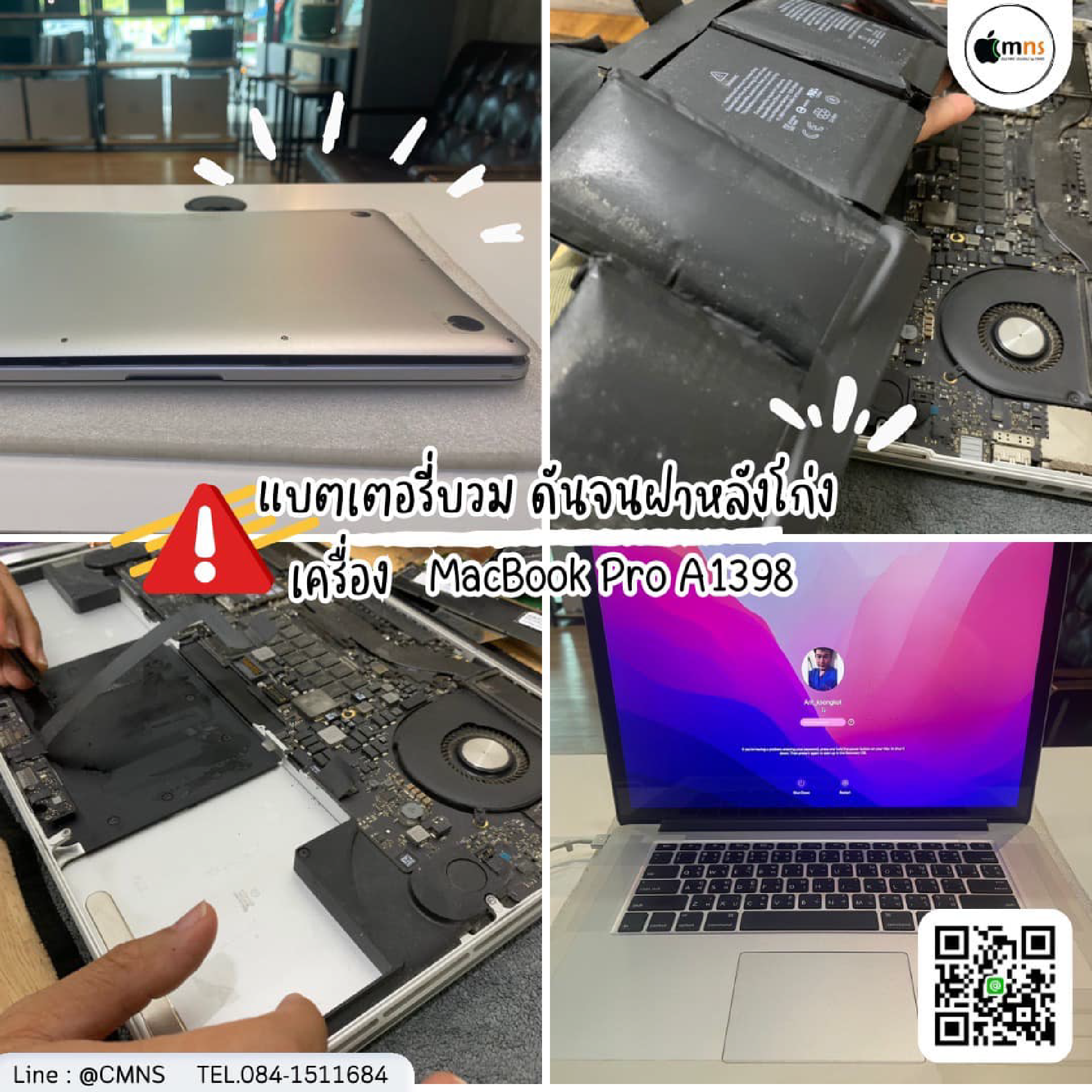A swollen battery in a MacBook, especially in older models, is one of the most hazardous issues and should never be ignored. It can cause severe damage to the device and poses a safety risk to the user. This is your complete guide on how to handle the problem.
Signs of a Swollen MacBook Battery
- Bent or Bulging Bottom Case: This is the most obvious sign. The swollen battery pushes the bottom case outwards, causing it to bulge.
- Wobbling on Flat Surfaces: The laptop no longer sits flat on a table.
- Trackpad Issues: The trackpad becomes difficult to click or is physically pushed upwards by the battery underneath it.
- Separating Seams: A visible gap appears between the top and bottom parts of the chassis.
How to Maintain and Prevent Battery Swelling
- Avoid Deep Discharges: Regularly letting the battery drain to 0% stresses the battery cells. It's best to charge it when it's around 20-30%.
- Avoid Extreme Heat: Do not use or leave your MacBook in high-temperature environments, such as a car parked in the sun. Heat is the number one enemy of battery health.
- Use Quality Chargers: Stick to genuine or certified chargers and cables to prevent power irregularities.
- Ensure Proper Ventilation: When performing intensive tasks, place the laptop on a hard, flat surface to allow for proper airflow.
"Repair" Guidelines for a Swollen Battery
EXTREME DANGER WARNING: A swollen lithium-ion battery is a fire hazard. NEVER attempt to puncture, press, or pry the battery yourself.
- Stop Using and Charging Immediately: Unplug the charger and shut down the device as soon as possible for your safety.
- Take it to a Professional for Immediate Replacement: Replacing a swollen battery requires caution and the correct tools. This should only be handled by an experienced technician.
- Choose a Trusted Repair Service: A shop like CMNS has experience handling swollen battery cases for various MacBook Pro models, including the A1398, ensuring a safe and professional service.
Conclusion: If you suspect your MacBook's battery is swollen, stop using it immediately and take it to a professional. Do not risk continuing to use it or attempting a DIY repair, as it can be dangerous.

